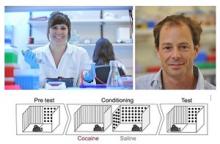- About us
- Research
- Students & Teaching
- Seminars & Events
- Directories
- Booking Rooms & Equipment
- עברית
Home » Prof. Ami Citri presents the connection between attention, memory and drug addiction
The claustrum is a small nucleus, exhibiting vast reciprocal connectivity with cortical, subcortical, and midbrain regions. Recent studies, including ours, implicate the claustrum in salience detection and attention.
We developed an iterative functional investigation of the claustrum, guided by quantitative spatial transcriptional analysis. Using this approach, we identified a circuit involving dopamine-receptor expressing claustral neurons projecting to frontal cortex necessary for context association of reward. We described the recruitment of claustral neurons by cocaine and their role in drug sensitization.
In order to characterize the circuit within which these neurons are embedded, we applied chemo- and opto-genetic manipulation of increasingly specified claustral subpopulations. This strategy resolved the role of a defined network of claustrum neurons expressing dopamine D1 receptors and projecting to frontal cortex in the acquisition of cocaine conditioned-place preference and real-time optogenetic conditioned-place preference.
These results suggest a role for a claustrum-to-frontal cortex circuit in the attribution of incentive salience, allocating attention to reward-related contextual cues.
